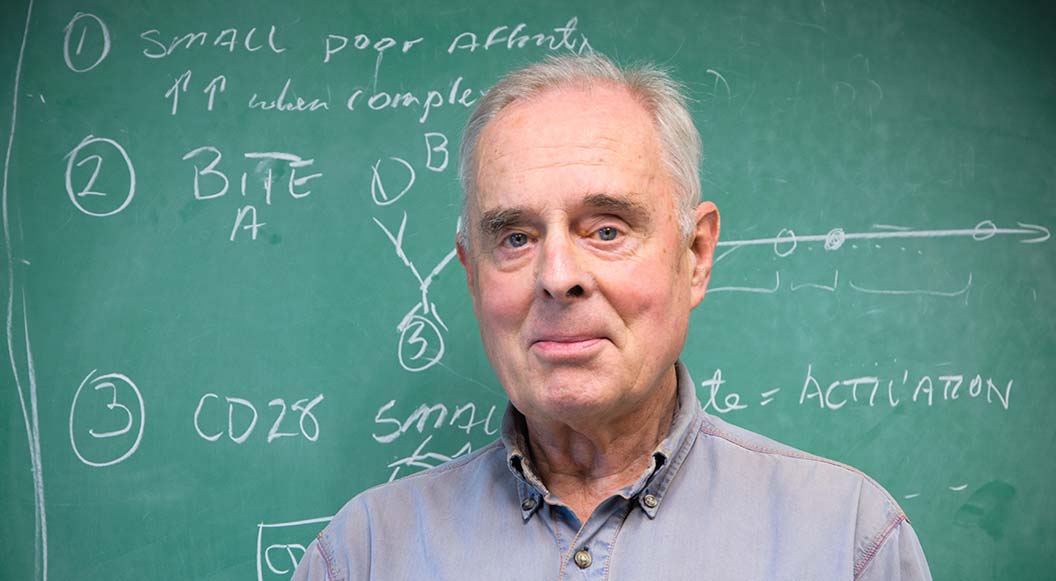
Two lifetimes’ worth of bone marrow transplant breakthroughs
A blackboard hangs in the office of bone marrow transplant pioneer Rainer Storb, MD, in Fred Hutch Cancer Center’s South Lake Union campus in Seattle.
That board is where many of the lifesaving breakthroughs in bone marrow transplantation were mapped out over nearly six decades. First hung in Storb’s office nearly 60 years ago, back when patients receiving the then-highly experimental bone marrow transplant were still irradiated in an underground World War II-era bunker in West Seattle, the board followed Storb to Fred Hutch’s first campus on First Hill and then to South Lake Union.
“We were pretty isolated in the early days,” Storb recalled.
He and the small-but-scrappy bone marrow transplant (BMT) team, led by E. Donnall Thomas, MD, had carved out a couple of floors in a down-at-the heels Public Health Service hospital. Success, and Thomas’ Nobel Prize for BMT, were years in the future. The bunker was six miles away. The hospital’s library was limited, and another six miles (in a different direction) separated the team from their scientific peers at the University of Washington.
But Storb couldn’t remain isolated. Over the ensuing years, he attracted new scientists to the field and built globe-spanning teams to answer the questions that have made the approach easier, safer and available to patients young and old.
In June, to commemorate his 90th birthday and his retirement, world leaders in bone marrow transplant convened at an all-day symposium highlighting Storb’s contributions to science and scientists.
Fred Hutch Executive Vice President Fred Appelbaum, MD, holder of the Metcalfe Family/Frederick Appelbaum Endowed Chair, who worked closely with Storb on bone marrow transplantation, introduced Storb at the symposium and attempted to summarize his ground-breaking work.
“It’s a pretty daunting task,” Appelbaum told the crowd. “That’s 60 years of amazing work. His CV has more pages than almost any of you have papers.”